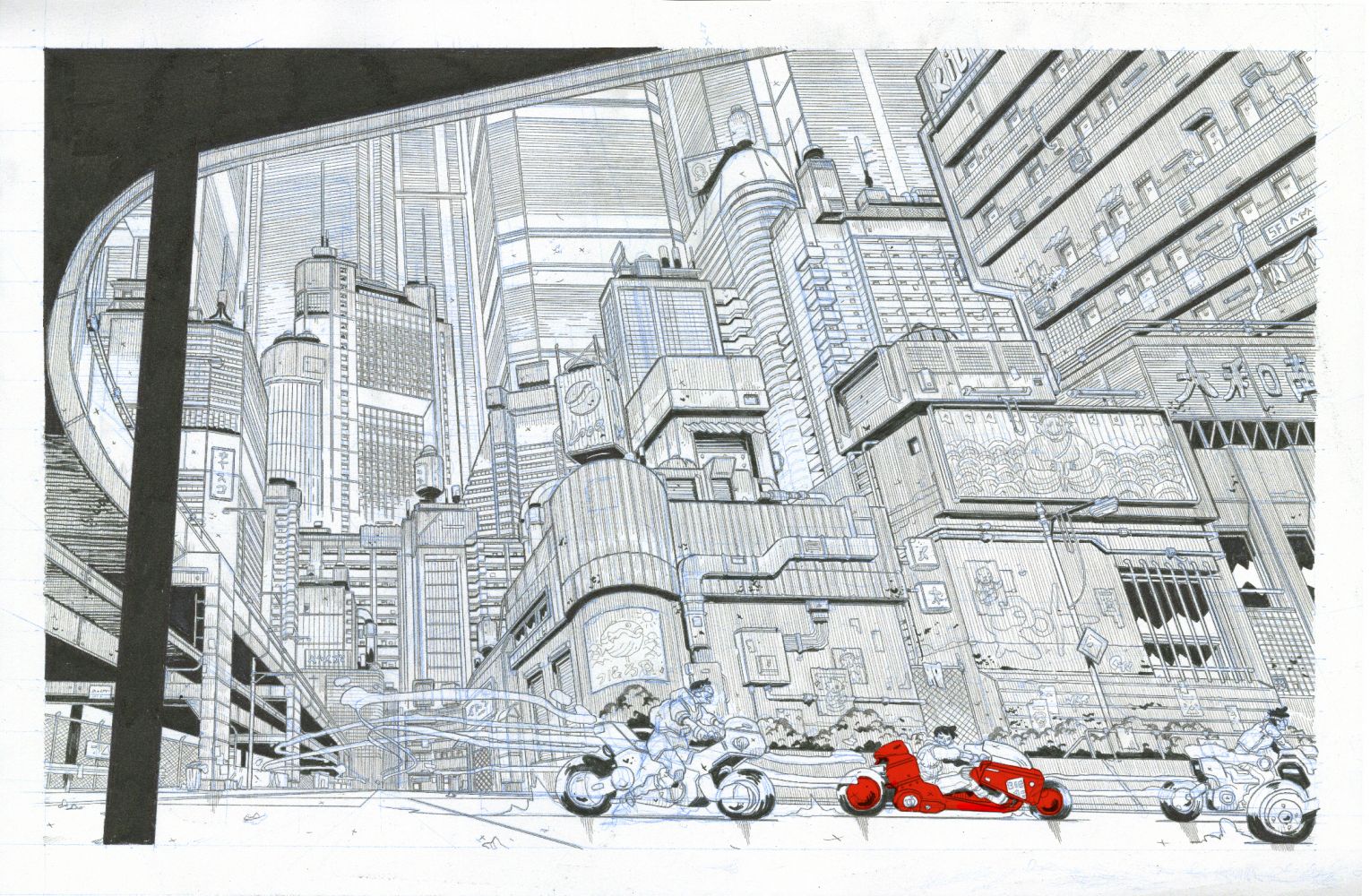Your Cart is Empty
Artists

Akira Comes to New York at The Philippe Labaune Gallery
May 11, 2021 3 min read 0 Comments
Cover image by Mathieu Bablet.
Manga and anime has been tied to New York going back decades. WPIX Channel 11 aired the likes of Astro Boy and Tobor the 8th Man in the 1960s, during the 1980s the earliest anime clubs in the city emerged from the meeting halls of St. Mark Place’s Polish Society while Kinokuniya book store has provided fans eager to pick up Japanese books since 1981 (it’s where I picked up my first Japanese edition of Sailor Moon many many years ago). In 1990, Katsuhiro Otomo, the author of Akira, appeared at Forbidden Planet comics shop to sign autographs while the lavishly animated Akira anime made it’s NYC debut at the Film Forum. All this happened along side New York’s own long history with small press zines, indie comics, the Big Two, and beyond. The Good for Health - Bad For Education exhibition at the recently opened Philippe Labaune Gallery represents a convergence of these moments in New York’s comic history.
The Philippe Labaune Gallery (534 West 24th Street) recently opened in Chelsea, right next to the High Line and a few blocks south of the Javits center. It’s first exhibition is Good for Health - Bad For Education: A Tribute to Otomo ran from April 8 to May 8 and featured works from Giannis Milonogiannis, Matthieu Bonhomme, Manuele Fior, LRNZ, and Marion Mousse, among others paying homage to Katsuhiro Otomo's Akira. Akira itself held a strange pall over 2020 and into this year, with it’s prophecies of calamity and urban decay set against an upcoming Japanese Olympics. It’s almost perfect timing for the Philippe Labaune Gallery to emerge with a show celebrating Akira.
Many of these works in Good For Health were featured in the book OTOMO: A Global Tribute to the Mind Behind Akira, published by Kodansha in 2017. Since Akira was the first work by Otomo published in English (and the only one still readily available) the show has an obvious Akira focus, though I was happy to see one picture referencing Otomo’s telekinetic murder mystery Domu from Matthieu Bonhomme. The breadth of works on display reflect what readers took away from Akira many years ago: explosive dread (Ian Bertram’s picture of Tetsuo having a meltdown on a grandiose throne), the electric vitality of cities (Dilraj Mann), the alien sense of isolation that comes from being an outcast (Francesco Cattani’s ink drawing of Akira floating above the earth). It's easy to look at Akira an simply think of it as teen biker rebellion meets cyberpunk aesthetic, but that would sell short the multitudes of the comic, which combined early post-war disillusionment with Economic Bubble era Japan's rapid commercial growth.
This exhibition largely focuses on European comic artists, which is unsurprising when you consider Mr. Labaune’s lifelong interest in European comics from the likes of Hergé, Moebius, and Enki Bilal. In early 2020 Laubaune organized the pop-up show A Survey of European Comic Art, and his future endeavors with the Philippe Labaune Gallery will continue to exhibit European and American comics talent. Shifting from the aesthetic of manga global destruction, but not totally removed from Akira’s themes of societal disillusionment, is an exhibition of Miles Hyman’s art, including his work adapting Shirley Jackson’s The Lottery. Miles Hyman - Narrative Images will run at the gallery from May 13 to June 26 and will be followed by Georges Bess: Tale of Unrealism, running September 9 to October 9.
Subscribe
Sign up to get the latest on sales, new releases and more …
